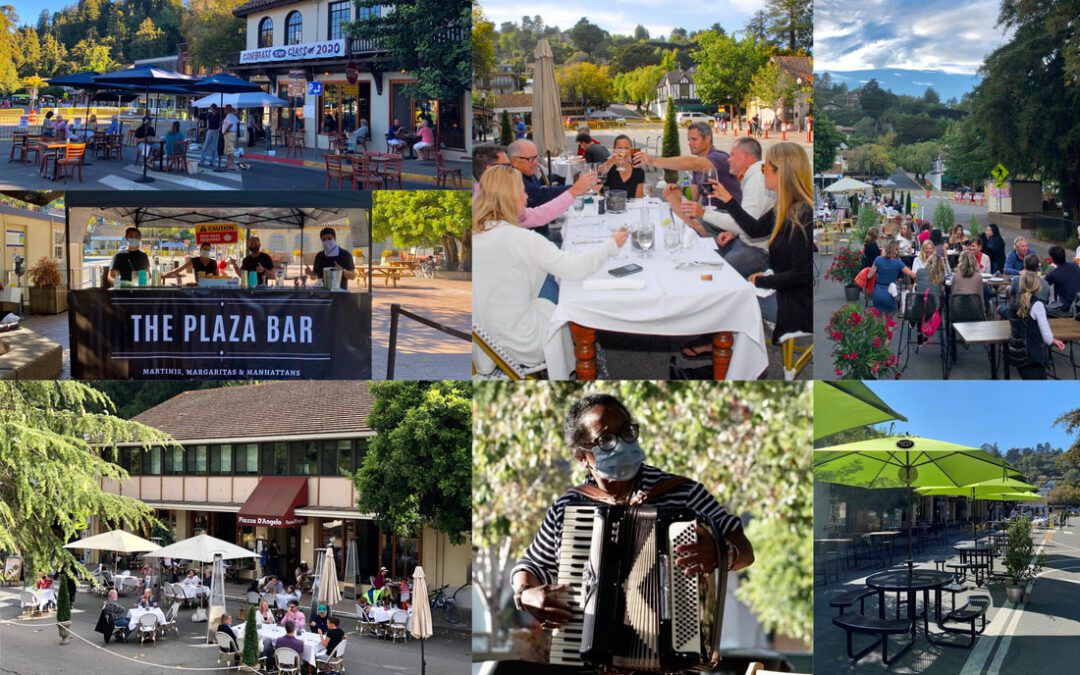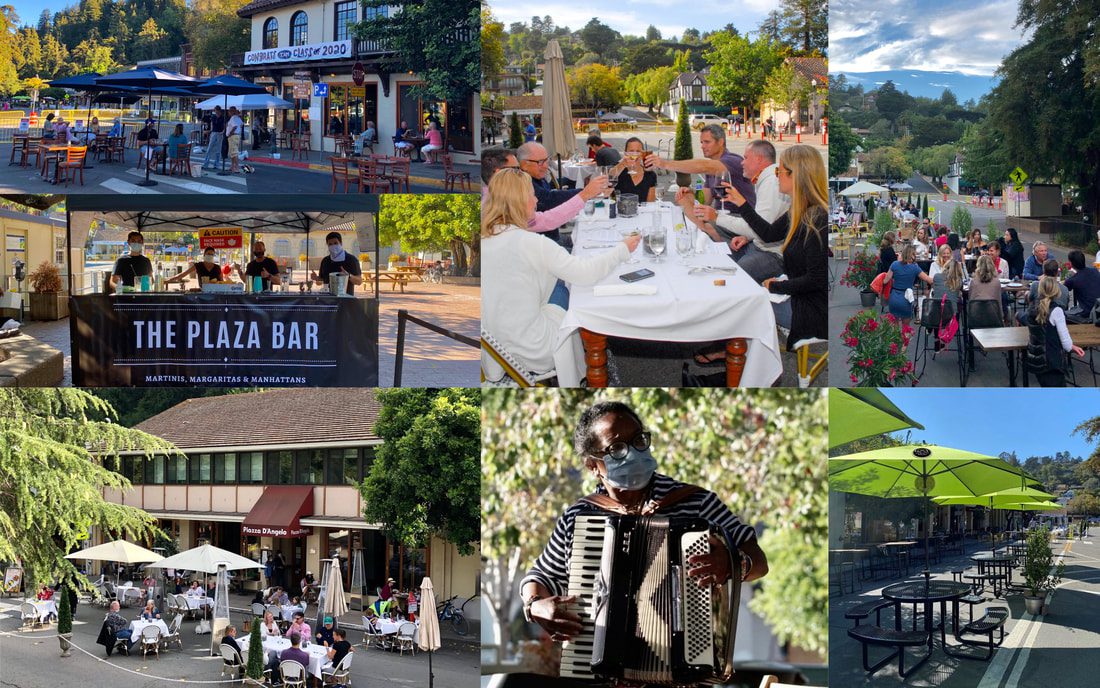Amidst it all, Marin restaurateurs created a petition, calling on Gov. Gavin Newsom and state Public Health Director Mark Ghaly to reconsider the ban on outdoor dining during the stay at home order, and asking Marin County Public Health Officer Dr. Matt Willis to allow outdoor dining once able to do so under state’s order.
The heartfelt petition spearheaded by Guesthouse owner Dustin Sullivan appealed to decision makers to consider the impact on working families suffering through the holiday season without the ability to earn a living or, in many cases, qualify for unemployment insurance. The petition, which has garnered nearly 6,300 signatures to date, also pointed out that COVID-19 case counts spiked dramatically in Marin in December despite outdoor dining being shut down for most of the month.
So here we are in mid-January. COVID-19 case counts remain high but are trending downward from an pandemic high of 172 on Jan. 6, and the Bay Area region’s ICU capacity, the key trigger for getting out from under the stay at home order, is at 4.7%, far below the 15% minimum requirement.
Doesn’t seem like the best time to ask for an exemption to an outdoor dining ban during a stay at home order, does it?
The Mill Valley Chamber and its restaurant members aren’t at all ignorant or insensitive of the horror of coronavirus. But they want to move the conversation forward, now, so that the outdoor dining ban can be reversed, quickly, when the time is right.
“We fully acknowledge that the metrics around COVID-19 case counts and ICU capacity make this a tough conversation right now, but we hope that state and county officials will be ready to allow outdoor dining as those metrics improve and the Bay Area region emerges from the Stay at Home Order. Our local restaurants are deeply committed to the health and safety of our customers, our employees and the entire Mill Valley community,” says Felicia Ferguson, chair of the Mill Valley Chamber’s board of directors and co-owner of Piazza D’Angelo, which is closed during the stay at home order. “We want this decision to be about hard data, and we just haven’t seen data to support an outdoor dining ban.”
The Mill Valley City Council and City Manager Alan Piombo agreed, sending letters to Newsom and Ghaly, as well as Willis,
asking then “to exempt outdoor dining in any further extension of the current Stay Home Order, to lessen the harmful economic impact of the current restrictions. We also request that any further restrictions on outdoor dining are based on empirical data/science that directly indicates that the activity is a potent contributor to the spread of coronavirus. We have seen case counts continue to spike while outdoor dining has been shut down, leading us to believe that the elimination of outdoor dining from permitted activities during the Stay Home Order is excessively restrictive.”
The letter noted that “if you do decide that restrictions on outdoor dining must continue, we ask you consider allowing the activity with additional modifications, such as a density reduction requirement, as has been in place for indoor retail shops. Restaurants could be required to reduce table size, limit customers permitted in the service area, and/or increase spacing between tables.”
The hunt for hard data on outdoor dining has been largely unsuccessful. Los Angeles County officials suffered a legal setback in November when a Superior Court judge found that county officials “acted arbitrarily” when deciding to close outdoor dining back in late November and that officials have a specific duty to “perform the required risk-benefit analysis” when making decisions about restaurant closures. The judge noted that County officials “could be expected to consider the economic cost of closing 30,000 restaurants, the impact to restaurant owners and their employees, and the psychological and emotional cost to a public tired of the pandemic.”
Marin Independent Journal columnist Dick Spotswood also called on government agencies to rely more on science to justify shutdowns and bans on specific sectors. “While indoor actives are a proven virus spreader, the science supporting elimination of commercial outdoor activities is lacking,” he wrote.
In a mid-December letter to Bay Area region public health officers, including Willis, eight professors at the University of California, San Francisco Division of Prevention Science, drew on their 30 years of behavior change research “to reduce the harm that HIV has caused in our communities,” they wrote: “Some of the current restrictions are not evidence-based and little effort seems to have been made to justify them. This erodes trust.”
“There appears to be little or no research showing that outdoor dining with 1) adequate ventilation, 2) distancing, and 3) using masks when not eating is associated with outbreaks,” they added, noting that “there also has been no evidence presented showing that keeping hair salons open with multiple precautions in place increases risk. “For the most part, Bay Area residents have tried hard to stay informed and comply with COVID-related restrictions to date, which makes the heavy-handedness of this latest order all the more puzzling.”
In its letter to Dr. Willis, the City requested “that if and when Governor Newsom removes the Stay Home Order, Marin County does not impose additional restrictions banning outdoor dining and limiting restaurants to take-out only. We also request that any further restrictions on outdoor dining are based on empirical data/science that directly indicates that the activity is a potent contributor to the spread of coronavirus.” The letter added the aforementioned possibility of outdoor dining density restriction if necessary.
The City’s letters sparked a flurry of media coverage throughout the Bay Area, including the Marin IJ, KRON4, KTVU, SFGate, NBC Bay Area and Eater.
Marin Public Health responded to the flurry of media coverage by saying, “We are not in favor of encouraging an activity that promotes mixing households where masks must be removed to eat or drink. We are experiencing unprecedented numbers of new cases daily and support the regional stay at home order as a means to protect our community.”
The UCSF doctors had retort for that claim: “We are already seeing posts on social media from people who were previously hosting outdoor gatherings … or only visiting hair salons that took careful precautions, now prioritize doing these activities in ways that allow them to evade detection. In addition to inviting relatives to stay with them, people are contacting their hair dressers to make house calls and moving their outdoor gatherings indoors.”
“In the case of COVID, the failure of the current shelter-in-place restrictions to make a distinction between low and moderate risk activities may thus be placing people at greater risk,” they wrote. “It is clear that we need a more nuanced approach, based on principles of harm reduction and with justification for the specific behaviors prohibited.”
That nuance is lost, says Sullivan, particularly because the loss of outdoor dining “eliminates a safe, monitored, outdoor gathering spot and forces people indoors and likely leads to more transmission, more illness, and more death.”


